Hardwood Rangeland Habitats: Although there are numerous ways to classify California’s oak-dominated woodlands, the five vegetation types used in the California Wildlife Habitat Relationships System (CWHR) are the most commonly used and are described below. The CWHR types are based on the dominant tree species, and we include information on Valley Oak Woodland, Blue Oak Woodland, Blue Oak-Foothill Pine Woodland, Coastal Oak Woodland, and Montane Hardwood Forest here for your reference.
Montane Hardwood Forest Vegetation Composition and Structure
Montane hardwood forests are perhaps the most variable of any California hardwood type. The dominant oak species vary by topography, soils, and elevation. Montane hardwood forests typically lack blue oaks and valley oaks. The characteristic oaks are canyon live oak, interior live oak, California black oak, and Oregon white oak. Many montane hardwood forests are located on fairly productive forest soils, and are not truly “hardwood rangelands”, but commercial hardwood forests under the jurisdiction of the California Forest Practices Act (FPA). However, pure stands of black oak, tanoak, and madrone with no evidence of conifer associates are exempt from the FPA at this time.
Canyon live oak often forms almost pure stands on steep canyon slopes and rocky ridge tops throughout the Coast Range, Klamath Mountains, Sierra Nevada, and Transverse and Peninsular Ranges. They have tremendously variable growth forms, ranging from shrubs with multiple trunks on rocky, steep slopes, to 60 to 70 foot tall trees on deeper soils in moister areas. Throughout the same range, California black oak tends to dominate on gentle topography at higher elevations. It grows to heights of 70 to 80 feet at maturity, with long, straight trunks in closed canopy situations. In open forests, California black oak has larger, spreading branches. Canyon live oak and California black oak are widely distributed and form the montane hardwood habitats throughout much of California’s mountain areas. However, these two species are usually not associated with hardwood rangeland sites.
Interior live oak occurs with canyon live oak or alone on steep canyon slopes and rocky, steep slopes throughout the North Coast and Sierra Nevada. Its growth form varies much like canyon live oak. Both of these evergreen oaks have dense canopies. Oregon white oak dominates small amounts of montane hardwood types along the northern Coast Range and northern Sierra Nevada and Cascades. Oregon white oak grows to a height of 50 to 80 feet at maturity, with rounded crowns in open conditions and rather narrow crowns in closed conditions.
Associates of montane hardwood communities at higher elevation, good quality sites include ponderosa pine, Douglas-fir, Pacific madrone, Jeffrey pine, sugar pine, incense-cedar, and white fir. At lower elevations and poor soils with steep slopes, associates include foothill pine, knobcone pine, tanoak, and Pacific madrone. In southern California, many of the same species are found, as well as coulter pine and bigcone douglas-fir. Blue oak and valley oak can be associates at lower elevations. Understory shrub species include poison-oak, ceanothus, manzanita, mountain-mahogany, coffeeberry, wild currant, and mountain misery. Forbs and grasses are not as prevalent as on lower elevation hardwood rangeland types. Montane hardwood forests have a pronounced hardwood tree layer with poorly developed shrub and herbaceous layers.
Ecological Processes
Since oaks of montane hardwood communities are long-lived, the community is rather stable and persistent without stand replacing disturbances. Trees are initially established by acorns, and dispersal by animals plays a major role in planting and survival. Once established, the four dominant oaks – canyon live, interior live, California black, and Oregon white – can sprout vigorously from stumps, allowing rapid re-establishment after a fire. Frequent fires over relatively small areas result in a variety of age classes across the landscape. The large number of hardwood and conifer species allows this type to occupy many environments and locations. The general inaccessibility of these habitats have protected them from many of the human-induced disturbances such as intensive agricultural, residential and commercial development, grazing, and wood cutting.
Locational Characteristics
Montane hardwoods range throughout California from 300 feet near the coast to almost 9,000 ft in southern California. Surrounding habitats include conifer-dominated types, chaparral types, blue oak and valley oak woodlands, and exotic annual grasslands.
Physical Characteristics
A wide range of physical characteristics affect montane hardwood forests. Slopes range from gentle to steep. Soils are mostly rocky, coarse, and poorly developed. However, relatively large California black oak stands occur in mountain valleys on alluvial soils. Exposures tend to be south, west, and east, while conifers tend to dominate on northern exposures. Climates are typically Mediterranean but extremely variable given the wide distribution of this type. Average summer temperatures are moderate, while average winter temperatures range from near freezing to the mid-40’s. Snow occurs in the winter at higher elevations, but does not remain as long as on adjacent conifer-dominated habitats.
Vertebrate Wildlife Species Associations with Montane Hardwood Forests
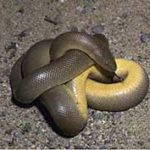
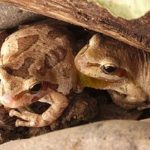
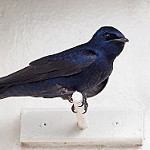
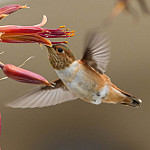
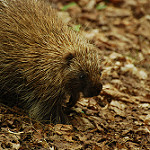
| These PDFs provide a list of the species of amphibians, birds, mammals, and reptiles that are predicted to use Montane Hardwood Forest habitats. The lists are derived from Version 5.0 of the California Wildlife Habitat Relationships System (CWHR) and includes those species that are predicted to use one or more hardwood rangeland canopy cover classes for breeding, feeding, and/or cover. Most waterbirds like ducks, geese, gulls, and shorebirds were not included in the CWHR predictions because they are mostly associated with lakes, ponds, and rivers. The CWHR System is managed by the California Department of Fish and Wildlife. |
| The tables also indicate which of these hardwood rangeland species are predicted to use several important habitat elements of the California hardwood rangeland habitats. The elements listed include: acorns; riparian habitat; logs, slash, and brush piles; snags; burrows, rocks, talus, caves and cliffs; and vernal pools and wetland. |
| Also included are those species which have special status designation by the California Department of Fish and Wildlife and/or the U.S. Fish and Wildlife Service. Most of these species, particularly mammals and reptiles, have locally restricted subspecies that have a special status designation. If you have a species with a special status, you need to get more detailed local information on whether your population is in a subspecies with this special designation. You need to ensure that there is adequate protection for these species, and to make sure that you are not in violation of state or federal endangered species regulations. |
| Landowners and managers using these lists can get a general idea of which species might be located on a particular property, and which important habitat elements are important to their use of an area. These lists should not substitute for local-based surveys. Landowners may wish to consult with local CDFW biologists, or consulting wildlife biologists for more detailed local surveys of their lands. |
